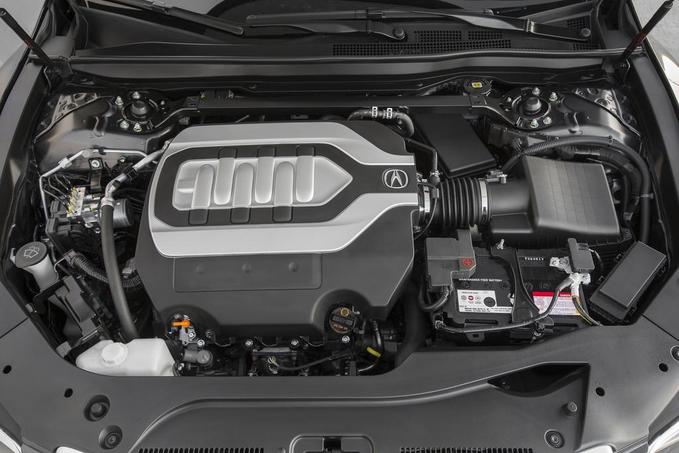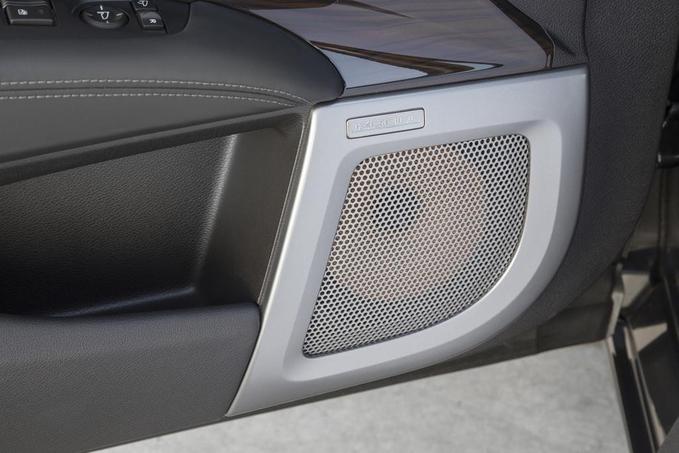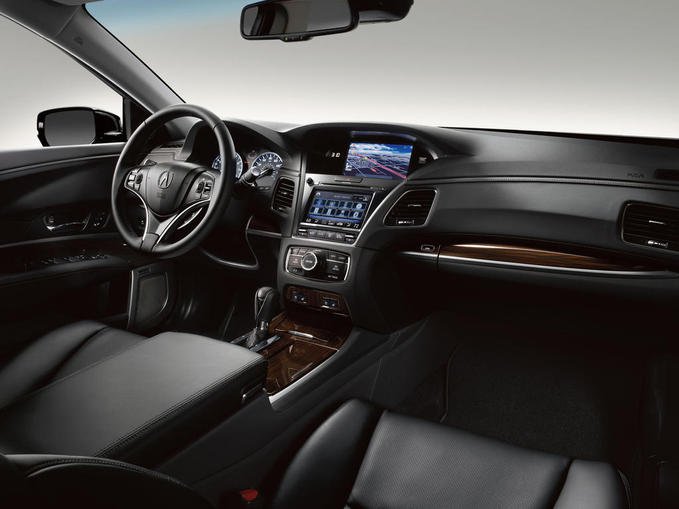The Acura RLX is loaded with compelling technology. All front-wheel drive models come with a four-wheel steering system that, for the most part, nullifies drawbacks that front-wheel drive vehicles suffer from.
Stylish Design Inside and Out
Its interior is also finished with high quality materials and designed with Honda’s characteristic attention to detail, but your money would be better spent elsewhere.
Even after softening most of the hard edges and smoothing chunky body panels, Acura still faces criticism for its design language. The key design elements include standard 18-inch wheels with the option for 19-inch versions and Acura’s signature “Jewel Eye” LED headlights. For what little it matters, the RLX certainly doesn’t offend me with its styling even if it doesn’t have me falling in love.
Driving Dynamics
The RLX needs enough horsepower and torque to deliver comfortable highway driving and it also needs the caliber of ride comfort that makes those trips a pleasure to take.

The RLX uses the same platform that underpins the Honda Accord. Base models power the front wheels with a 3.5-liter V6 that makes 310 HP and 272 lb-ft of torque, but that means the RLX doesn’t stand a chance against rear-wheel drive based models from German luxury brands like BMW and Mercedes-Benz. Instead the powertrain layout limits it to competing with products like the Cadillac XTS, which is also based on a front-wheel drive platform.
That’s not a deathblow by itself for any car that isn’t meant to offer serious sports performance, including the RLX. Front-wheel drive doesn’t matter as long as the ride is comfortable, road noise is muted and you aren’t expected to pay a price that sits in line with other vehicles in the same segment.
Unfortunately Acura hasn’t managed to achieve very much of that because it’s disappointingly rough to drive over uneven pavement. When you drive over a pothole, the noise seems to shake through the chassis much more than a car in this segment should. It also isn’t very price competitive with other vehicles that offer roughly the same end product.

Nevertheless, the precision all-wheel steering (P-AWS) system is no substitute for the Super-Handling All-Wheel Drive (SH-AWD) that other Acura products like the now-gone TL could lean on. So Acura’s P-AWD system ends up feeling more like an expensive parlor trick than a point of differentiation that justifies a premium.
Money
The RLX stars at $49,370, which is $3,715 more than you would pay for a base XTS with roughly the same horsepower and less weight to pull around and GM’s magnetic shocks that do a better job of absorbing pavement imperfections than the this car does. The price difference melts away once you start piling options on and eventually the Cadillac becomes more expensive, but not until both are fully loaded.
I drove the and RLX with all the frills ($61,370) Acura can muster, including a Krell audio system, adaptive cruise control, lane keeping assistance and forward collision braking among other things.
High-End Options
The optional premium stereo is spectacular and doesn’t seem to distort music at any point in its volume range. Similarly, the collision prevention system does its job, although the lane-keeping and collision warning sensors are prone to going off earlier than I would like during highway driving. The adaptive cruise
Even if there isn’t as much legroom as other large premium sedans, it isn’t as if the RLX is lacking for space in the second row. It has more than enough to accommodate tall passengers and the seats themselves are pleasant to sit in thanks in part to sunshades and seat warmers, not to mention high quality leather upholstery.
At 14.7 cubic feet, trunk space is small for a vehicle of this size, but not too small to handle four small suitcases.
The Verdict:
The RLX is a an example of a car that should be satisfying based on its own merits, but it’s ultimately hamstringed by the fact that there are other cars that tick most of the same boxes better and even for less money.










